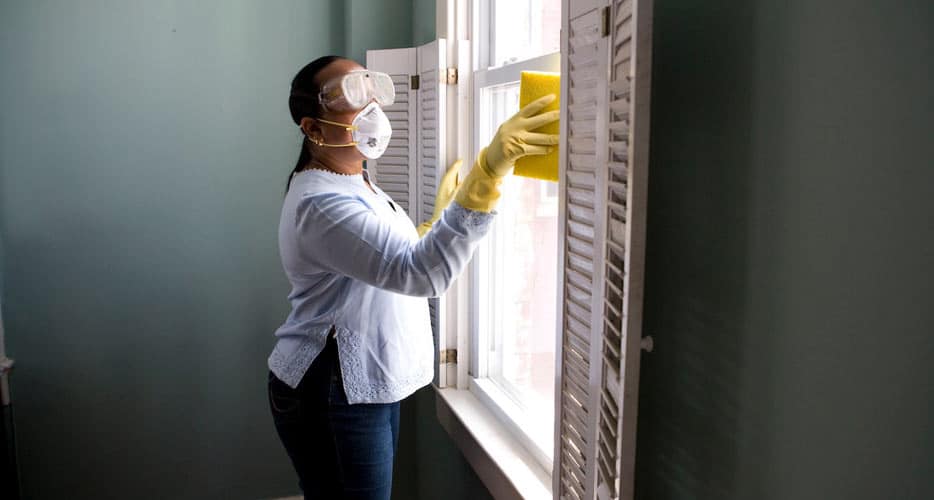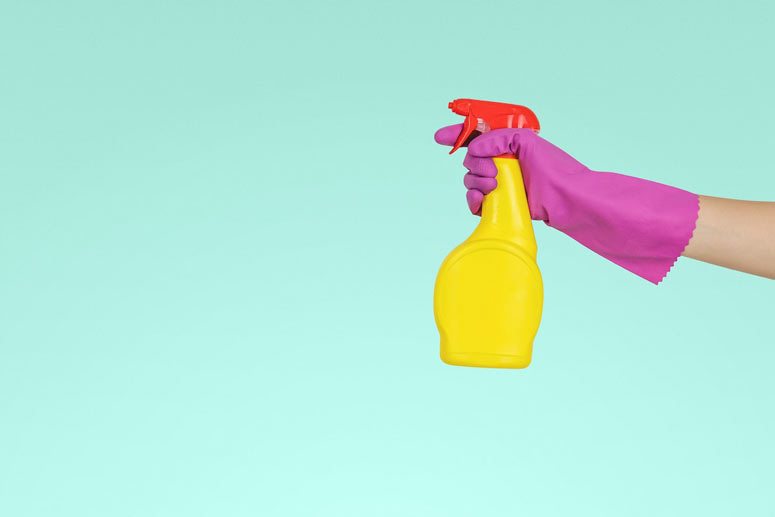
Nearly a year of living through a pandemic, taking precautions against COVID-19 is still something we have to be mindful of to reduce the spread of the disease. We all know the importance of wearing masks and washing our hands with soap and water; however, with all the daily information, thanks or no thanks to social media, it can be difficult to parse through what is true and what isn’t.
This is especially important regarding something as important as health and safety. You’ve probably read a lot of different tips and tricks on how to keep safe and clean, but which ones do actually help keep you and your family safe?
Myth 1: Cleaning, sanitizing & disinfecting means the same thing
Though these terms have frequently been used interchangeably, this couldn’t be farther from the truth. It’s easier to think of them as being on a spectrum with cleaning and disinfecting on either side.

According to the Centers for Disease Control, cleaning removes visible dirt and other impurities from surfaces usually using soap and water, but it doesn’t necessarily disinfect.
Sanitizing, on the other hand, lowers the number of germs on surfaces or objects either by killing them or removing them. Finally, disinfecting is the most thorough, as it kills most of the germs on surfaces.
Myth 2: Disinfectants work instantly
Disinfecting takes time. Just wiping down a surface won’t kill the germs, so be sure to check the label and read the instructions on how to properly and effectively use the product. The label will indicate how long the solution needs to stay on the surface; you may need to leave it for around four minutes or longer for it to actually disinfect properly.
Myth 3: Disinfecting is better than cleaning
If disinfecting is the most thorough way to get rid of germs, then surely, disinfecting is better than cleaning? Actually, they go hand-in-hand. Before you disinfect, you should always clean first by removing surface dust, dirt, and grime as they may react negatively with the disinfecting product, which could reduce its effectiveness.
Myth 4: Soft surfaces can be disinfected
Disinfectants only work on hard, non-porous surfaces. Though many disinfectants are safe to use on soft surfaces like cloth or pillows, they don’t disinfect but instead sanitize the surface.
Myth 5: All cleaning products disinfect
Don’t take things at face value. Not all cleaning products actually disinfect. Unless the packaging states that it disinfects, then it is very likely it can only clean. The importance of knowing what your chosen product can do and how to properly use it can’t be stressed enough.
Myth 6: Bleach and water solution can be stored and used for a long time
Plenty of people use a mixture of bleach and water to use as a disinfectant. It may be effective but you still need to take precautions. It’s recommended to make fresh batches when you need it and to avoid storing any excess. If you make your own disinfecting solution from bleach and water, make sure to use it up as it loses effectiveness after about a day.
Article and Photo originally posted by Property Report Ph last February 19, 2021 and written by Denise Nicole Uy.







More Stories
Weekend wanderer: This walk in Manila is a trip to art and to our past
Enjoy no-frills camping in the great outdoors in Tanay
Landco Pacific raises the bar for premium resort and leisure living